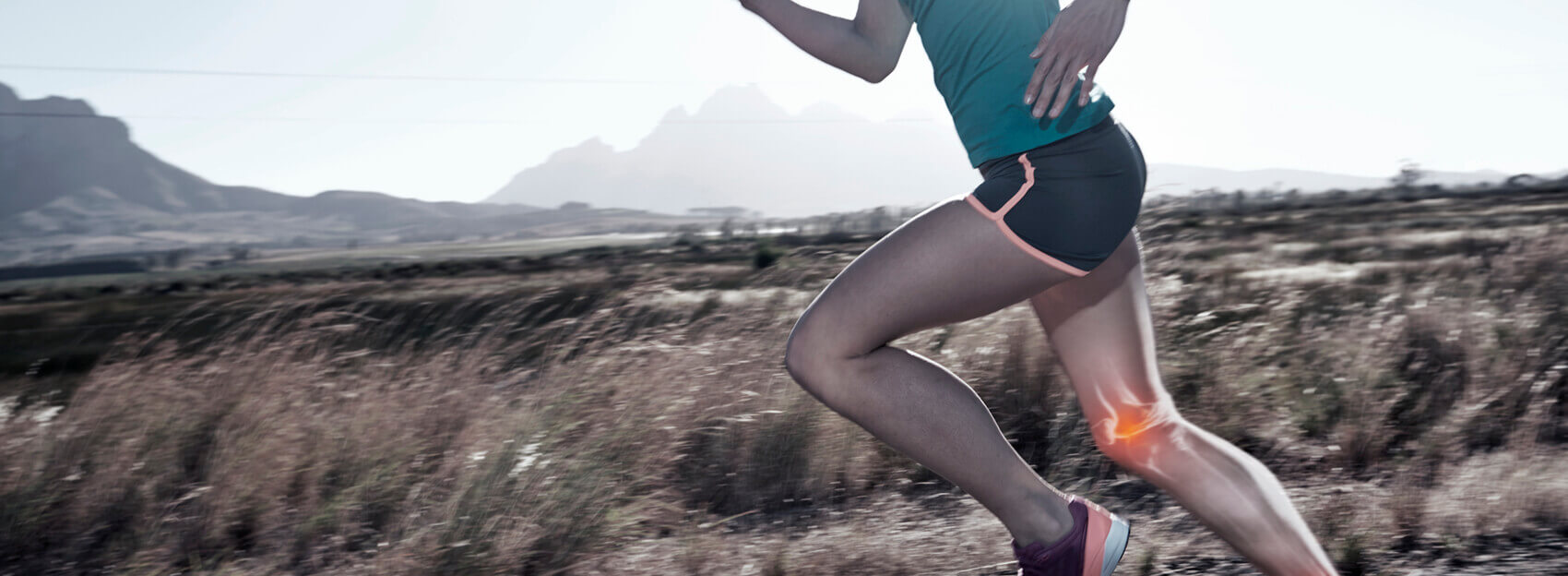At Long Island Spine Rehabilitation Medicine, our doctors often successfully treat patients with runner’s knee. Though the condition can be quite painful, patients typically recover fully within 4 to 6 weeks. Like so many other injuries named after sports, runner’s knee does not only occur in runners. Medically known as patellofemoral syndrome, the pain of runner’s knee usually affects the front of the knee where the knee (patella) connects to the thigh bone (femur).
Causes of Runner’s Knee
In most cases, however, runner’s knee is caused by one or more of the following:
- Tight hamstrings or Achilles’ tendons
- Poor foot support
- Excessive training or overuse
- Direct blow to the knee
- Weak or unbalanced thigh muscles (quadriceps and hamstrings)
In some cases,runner’s knee is caused by a structural congenital defect. One such defect is a misalignment of the kneecap (too high in the joint). Other defects may be present in the feet, like abnormally loose joints (hypermobility) or flat feet (overpronation). Any of these abnormalities can alter an individual’s gait and put undue stress on the knee. A condition known as chondromalacia patella, in which the cartilage under your kneecap breaks down, may also be an underlying cause of runner’s knee.
Whatever has caused your runner’s knee, the injury requires prompt medical attention so that it can be properly diagnosed and effectively treated. Ignoring the pain and continuing your normal routine, whether it involves running or not, will only make matters worse. Contacting one of our highly trained physiatrists (MDs who specialize in pain relief and restoration of function) is a wise move.
Symptoms of Runner’s Knee
The primary symptom of runner’s knee is pain severe enough to interfere with your regular activities and athletic pursuits. The pain usually is felt in front of your kneecap, though it may be felt around or behind the joint. The pain of runner’s knee is typically worsened by: walking (especially downstairs or downhill), squatting, kneeling, running, or even just rising from a sitting position.
Other symptoms associated with the disorder may include:
- Swelling and soreness at and around the knee
- Popping, rubbing or grinding sound or sensation when moving the knee
- Weakness in the knee or feelings of instability
Because the symptoms of runner’s knee may also result from other injuries or conditions, it is essential to have your knee carefully evaluated by an exacting diagnostician.
Diagnosis of Runner’s Knee
At Long Island Spine Rehabilitation Medicine, we pride ourselves on being meticulous when making a diagnosis. During your initial visit, we will not only take a careful medical history, including any previous injuries, operations, and/or underlying conditions, we will also physically examine your knee to assess strength, mobility, pain, and flexibility.
Depending on our findings, we may administer any of the following we deem necessary to pinpoint the cause of your pain:
- Imaging studies, such as X-rays, MRIs, or diagnostic ultrasound
- Ultrasound– or fluoroscopically-guided injections to pinpoint your pain’s origin
- Electromyography (EMG) and nerve conduction studies if we suspect nerve damage
Once we have made a definitive diagnosis, we will be able to treat you with the dual goals of relieving your pain quickly and restoring full function to your knee as soon as possible. We are well aware that whether you are a runner or not, knee pain is not only unpleasant but disabling.
How We Determine the Best Treatment Options for You
As with most musculoskeletal injuries, the tried and true remedies represented by the acronym RICE (Rest, Ice packs, Compression, and Elevation) can make an immediate difference. This means that you will have to temporarily alter your activity level, apply ice packs periodically, wrap your knee in an elastic bandage or knee sleeve, and keep your knee elevated as much as you can.
Our treatment options will depend not only on your precise diagnosis but on the following variables:
- How old you are
- Your overall health and medical history
- The severity of your pain
- How well you are able to tolerate specific medications or procedures
- Your strength, stamina, and agility in terms of physical exercise
- Your own preference
We Will Tailor a Treatment Plan to Your Specific Needs
Your treatment plan will include items from the following list:
- Knee bandage, strap, or support to provide stability during recovery
- Assistive device, such as a cane or crutches if needed
- Arch support or orthotics in your shoes to improve your gait
- Pain relief medications (like ibuprofen) to lessen pain and inflammation
- Customized physical therapy to stretch and strengthen muscles surrounding your knee
- PRP (platelet-rich plasma) therapy to accelerate healing
- Customized physical therapy to stabilize and strengthen your joints and muscles
- Ultrasound-guided injections of corticosteroid and analgesics
- PEMF (pulsed electromagnetic field) therapy
- Acupuncture
We Will Help You Avoid Knee Injuries in the Future
Beyond helping you heal, we will make recommendations based on your particular situation that will, hopefully, prevent future knee injuries. All of these suggestions are based on the importance of not overstressing your knees. They include:
- Losing excess weight
- Stretching before running or other exercise
- Making sure to increase your activities gradually (especially now, after recovery)
- Continuing to use arch supports or orthotics if they have been prescribed
- Wearing good running shoes
- Using correct running posture (leaning forward with bent knees)
Contact Our Experienced Professionals Today So You Can Start Feeling Better Tomorrow
At Long Island Spine Rehabilitation Medicine, we are dedicated to your health and well-being.
Much as we want to form a long-term relationship with you and be available whenever you need us, we want even more to help you avoid pain and immobility. To that end, we will give you all the helpful tips we know to keep you up and running.
